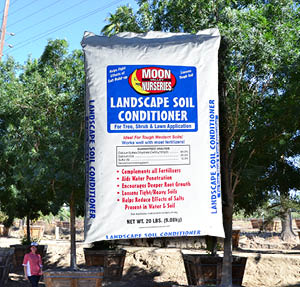Watering is the most important nutrient for Tree Health

In order to have the strongest and most beautiful trees in the neighborhood, those trees need to be getting as many nutrients that they can from custom-blended fertilizer, proper sun exposure, and a proper watering schedule.
In this article, we are going to cover potential water issues with over and under watering your trees, how to check if your tree might be getting too much or too little water, and how to fix this issue the right way.
Signs of an Underwatered Tree
- Leaves wilt and might turn brown around the edges
- Yellowing leaves that seem to be underdeveloped in size
- Loss of leaves
- No direct irrigation system. Trees cannot rely on sprinklers set up for the lawn.
Signs of an Overwatered Tree
- The area around the tree is constantly wet (more than moisture)
- New growth withers before or turns light green/yellow
- Leaves may be green, but they are fragile and break easily
Notice any Issues?
In both cases, the trees can look very similar and will need a closer examination. Follow the instructions below for a quick and easy test and a more precise test, if needed.
How to Check Proper Watering
The Quick and Easy Test
Tools Needed: long screwdriver, gloves (personal preference)
Instructions: Take the long screwdriver and insert it into the soil below your tree, closer to the canopy line. If the soil is too hard to get the screwdriver deep into the ground, it means the soil is not moist and it does, in fact, need more water.
This test will be better used if you are concerned about your trees not getting enough water. To get a better idea if your tree is being overwatered, the next test will be able to give you more insight about what is going on with your tree and what type of care it truly needs.
The Precise-as-can-be Test
Tools Needed: small shovel or garden trowel, gloves
Instructions: Prep an area below your tree for digging. You will want to dig a hole that is about 6-8 inches deep and grab a handful of soil. Your soil should be cool and moist at this depth.
Detecting Overwatering Issues: If the soil is muddy and drenched, you are overwatering the tree and need to adjust your watering schedule.
Detecting Underwatering Issues: If your soil isn’t drenched in water or sandy, try to roll the soil into a ball. If it crumbles, your tree needs more water than it is currently receiving.
Check for Clay Soil: This would be a good time to do one more test since you already have a hole in the soil. It is always helpful to care for your trees when you understand the type of soil you might have in your yard.
To check for clay soil, roll another ball and poke it a few times with a screwdriver. If it doesn’t break apart or barely budges, you probably have clay soil around your tree (and most likely everywhere else in your yard).
Another sign that your soil might have a high amount of clay is your yards inability to soak water into the ground quickly, such as after rainstorms or even after the sprinkler system runs.
How to Fix an Overwatered Tree
When your tree is receiving too much water, it is essentially drowning because the excess water fills all available air pockets in the soil. This cuts off any oxygen that was originally getting to the root system of your tree.
Overwatering can lead to tree damage from root rot to long-term stress. It is important to monitor regularly so you can act quickly and not let the tree be damaged beyond repair. Here are three tactics we use to solve overwatering issues.
Stop Watering Your Trees: Disable your current watering schedule for a week to two weeks. Before resuming to water, conduct the “Quick and Easy” test mentioned above. Once you have checked the soil and it is moist, you can start to water again.

Fix the Soil Around Your Trees: When you examine the soil for signs of over/underwatering, you may have also noticed that your soil was very hard to break apart. If you do have clay soil, mix in our Soil and Water Conditioner to optimize your soil conditions.
Inspect Your Trees: The best and natural way to inspect your trees for water issues is after a rainstorm. If you don’t have time to wait for the rain, you can flood certain areas to monitor and see if the water is pooling too much around your tree. If this is happening, follow the directions to fix your soil as it may have too much clay.
Another thing to consider is if the water is coming from another area. Water might run down hills, or even minor slopes, that lead to the base of your tree. The rain gutters might be designed to empty to near your tree and may need to be positioned somewhere.
More from Moon Valley Nurseries
For New Tree (0-2 years since planting) watering basics, click here.
For Mature Tree (2+ years since planting) watering basics, click here.
To learn more about one of the best privacy hedges in the Southern California area, click here.
Submit a Comment